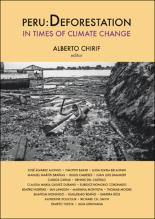Por favor, use este identificador para citar o enlazar este ítem:
https://hdl.handle.net/20.500.12921/425Registro completo de metadatos
| Campo DC | Valor | Lengua/Idioma |
|---|---|---|
| dc.contributor.author | Baker, Timothy R. | - |
| dc.contributor.author | Del Castillo Torres, Dennis | - |
| dc.contributor.author | Honorio Coronado, Eurídice | - |
| dc.contributor.author | Lawson, Ian T. | - |
| dc.contributor.author | Martín Brañas, Manuel | - |
| dc.contributor.author | Montoya, Mariana | - |
| dc.contributor.author | Roucoux, Katherine H. | - |
| dc.date.accessioned | 2020-02-03T20:15:06Z | - |
| dc.date.available | 2020-02-03T20:15:06Z | - |
| dc.date.issued | 2019-12 | - |
| dc.identifier.citation | Baker, T., Del Castillo Torres, D., Honorio Coronado, E., Lawson, I., Martín Brañas, M., Montoya, M., & Roucoux, K. (2020). The challenges for achieving conservation and sustainable development within the wetlands of the Pastaza - Marañon basin, Peru. En: Chirif Tirado, Alberto (Ed). Peru: Deforestation in times of climate change. Lima: IWGIA, 2019. pp 155-174. | es_ES |
| dc.identifier.isbn | 9788792786951 | - |
| dc.identifier.uri | https://hdl.handle.net/20.500.12921/425 | - |
| dc.description.abstract | The wetlands of the Pastaza-Marañón basin in northern Peruvian Amazonia are record-breaking: situated in the centre of one of the largest remaining areas of intact forest on the planet, they contain the largest known peatland complex in Amazonia. Thick layers of organic matter accumulate where the soil remains constantly wet and the large quantities of below-ground carbon make these the most carbon-dense of all Amazonian forests. The purpose of this article is to address this question by firstly documenting the history of the scientific exploration of these ecosystems, which helps to place these wetland forests in their regional and global context. Secondly, we explore our emerging knowledge of the relationships these forests have with people. In particular, we discuss the threats faced by these communities and their forests and the actions that are required to ensure that these ecosystems are sustainably managed and persist into the future. | es_ES |
| dc.format | application/pdf | es_ES |
| dc.language.iso | eng | es_ES |
| dc.publisher | International Work Group for Indigenous Affairs - IWGIA | es_ES |
| dc.relation.uri | https://www.iwgia.org/images/publications/new-publications/Peru_Deforestation_in_Times_of_Climate_Change_Dec_2019.pdf | es_ES |
| dc.rights | info:eu-repo/semantics/openAccess | es_ES |
| dc.rights.uri | http://creativecommons.org/licenses/by-nc-nd/2.5/pe/ | es_ES |
| dc.source | Instituto de Investigaciones de la Amazonía Peruana | es_ES |
| dc.source | Repositorio Institucional - IIAP | es_ES |
| dc.subject | Turberas | es_ES |
| dc.subject | Deforestación | es_ES |
| dc.subject | Pueblos indígenas | es_ES |
| dc.subject | Pantano | es_ES |
| dc.subject | Conservación de bosques | es_ES |
| dc.subject | Mauritia flexuosa | es_ES |
| dc.subject | Abanico del Pastaza | es_ES |
| dc.subject | Pastaza, río | es_ES |
| dc.subject | Amazonía | es_ES |
| dc.title | The challenges for achieving conservation and sustainable development within the wetlands of the Pastaza - Marañon basin, Peru | es_ES |
| dc.type | info:eu-repo/semantics/bookPart | es_ES |
| dc.description.peer-review | Revisión por pares. | es_ES |
| Aparece en las colecciones: | Libros y capítulos de libros | |
Ficheros en este ítem:
| Fichero | Descripción | Tamaño | Formato | |
|---|---|---|---|---|
| Baker_capitulo_2019.pdf | Texto Completo | 921,15 kB | Adobe PDF |  Visualizar/Abrir |
Compartir :
Este ítem está sujeto a una licencia Creative Commons Licencia Creative Commons

Herramientas de Administrador


